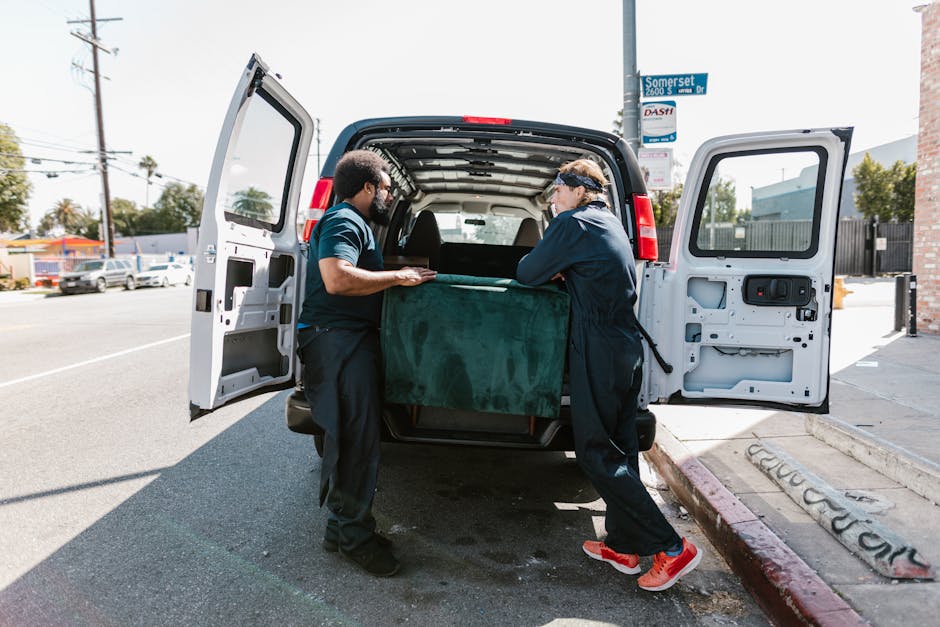How to Rent Cars for Moving Large Items
When it comes to moving large items, whether it’s furniture, appliances, or other bulky possessions, having the right vehicle can make all the difference. Renting a car for moving purposes can be a cost-effective and convenient solution, especially if you don’t own a vehicle large enough to transport your belongings. In this comprehensive guide, we will explore everything you need to know about renting cars for moving large items, from choosing the right vehicle to packing and loading techniques. Let’s dive in!
The Benefits of Renting Cars for Moving

Before we delve into the specifics of renting cars for moving large items, let’s first discuss why this option is a popular choice for many individuals and families. One of the primary benefits of renting a car for moving is the flexibility it offers. Unlike hiring a moving company, which may have limited availability or require booking well in advance, renting a car allows you to pick up and drop off the vehicle at your convenience.
Another advantage of renting a car for moving is cost savings. Moving companies can be expensive, especially for short-distance moves or when you only have a few large items to transport. Renting a car allows you to control costs by only paying for the vehicle for the duration you need it.
Additionally, renting a car for moving gives you the freedom to choose the size and type of vehicle that best suits your needs. Whether you need a small van for a few boxes or a large truck for furniture and appliances, rental car companies offer a wide range of options to accommodate different moving requirements.
Overall, renting a car for moving provides a convenient, cost-effective, and customizable solution for transporting large items from one location to another.
Choosing the Right Vehicle

When it comes to renting a car for moving large items, selecting the right vehicle is crucial to ensuring a smooth and successful move. The size and type of vehicle you choose will depend on the quantity and dimensions of the items you need to transport.
For smaller moves or items that can fit in the back of a car, a compact or midsize sedan may suffice. However, for larger items such as furniture, appliances, or multiple boxes, you may need a van, SUV, or truck. Rental car companies offer various options, including cargo vans, pickup trucks, and moving trucks, with different payload capacities to accommodate your needs.
When choosing a vehicle, consider the following factors:
1. Payload Capacity:
Determine the weight and dimensions of the items you need to move to ensure they will fit in the vehicle and remain within the payload capacity limits. Overloading a vehicle can be dangerous and may cause damage to the items or the vehicle itself.
2. Accessibility:
Consider how easy it is to load and unload items into the vehicle. Trucks with a low deck height or sliding rear doors may offer greater accessibility for bulky or heavy items.
3. Fuel Efficiency:
If you are moving a long distance, consider the fuel efficiency of the vehicle to minimize costs. Smaller vehicles or those with diesel engines may offer better fuel economy for longer trips.
4. Insurance Coverage:
Check with the rental car company to understand what insurance coverage is included with the vehicle rental. Additional insurance options may be available to provide extra protection for your belongings during the move.
Packing and Loading Techniques

Once you have selected the right vehicle for your moving needs, proper packing and loading techniques are essential to ensure a safe and efficient move. Follow these tips to pack and load large items effectively:
1. Disassemble Furniture:
If possible, disassemble large furniture pieces to make them easier to transport and prevent damage. Keep hardware and screws in labeled bags to facilitate reassembly at your destination.
2. Use Moving Blankets and Straps:
Protect furniture and fragile items with moving blankets to prevent scratches and dents during transit. Use ratchet straps or bungee cords to secure items in place and prevent shifting while driving.
3. Load Heaviest Items First:
When loading the vehicle, place the heaviest items at the front or bottom of the load to distribute weight evenly and prevent top-heavy or unbalanced loads. Stack lighter items on top of heavier ones to maximize space.
4. Fill Empty Spaces:
Utilize empty spaces in furniture, appliances, or boxes to pack smaller items and optimize space. Avoid leaving gaps or empty pockets that can cause items to shift during transit.
5. Secure Loose Items:
Secure loose items such as drawers, doors, or removable parts to prevent them from opening or falling out during the move. Use tape or straps to keep items in place and reduce the risk of damage.
Planning Your Move

Before you rent a car for moving large items, be sure to plan your move carefully to minimize stress and ensure a successful relocation. Consider the following tips to help you prepare for moving day:
1. Create a Moving Checklist:
Make a list of all the items you need to move and organize them by category or room. A moving checklist can help you stay organized and ensure you don’t forget anything important during the move.
2. Reserve the Rental Vehicle in Advance:
Book the rental car well in advance to secure the vehicle size and pickup/drop-off location you prefer. During peak moving seasons, rental car availability may be limited, so it’s best to reserve early to avoid last-minute issues.
3. Recruit Help:
Enlist friends or family members to assist with the move, especially if you have heavy or awkwardly shaped items to transport. Having extra hands can make the moving process faster and more manageable.
4. Plan Your Route:
Map out your route in advance and consider any potential obstacles such as narrow roads, low bridges, or construction zones. Planning your route can help you avoid delays and ensure a smooth journey to your destination.
5. Pack Essentials Separately:
Prepare a separate bag or box with essential items you may need during the move, such as snacks, water, a first aid kit, tools, and personal belongings. Keep this bag easily accessible in case you need it during the journey.
Common Misconceptions about Renting Cars for Moving
Despite the many benefits of renting cars for moving large items, there are several common misconceptions that may deter individuals from choosing this option. Let’s debunk some of these myths:
1. Myth: Renting a Moving Truck Is Expensive.
While moving trucks may seem costly at first glance, they can actually be a cost-effective option for transporting large items, especially when compared to hiring a moving company. Rental car companies offer competitive rates and flexible rental periods to suit different budgets.
2. Myth: You Need a Special License to Drive a Moving Truck.
Contrary to popular belief, most rental car companies do not require a special license to drive a moving truck. As long as you have a valid driver’s license and meet the age requirements, you can rent and drive a moving truck without any additional qualifications.
Conclusion
To wrap things up, renting a car for moving large items can be a convenient, cost-effective, and flexible solution for individuals and families looking to relocate. By choosing the right vehicle, packing and loading items properly, and planning your move in advance, you can ensure a smooth and successful transition to your new location. Whether you’re moving across town or across the country, renting a car for moving can help simplify the moving process and alleviate the stress of transporting bulky items. So, next time you need to move large items, consider renting a car and enjoy a hassle-free moving experience!




